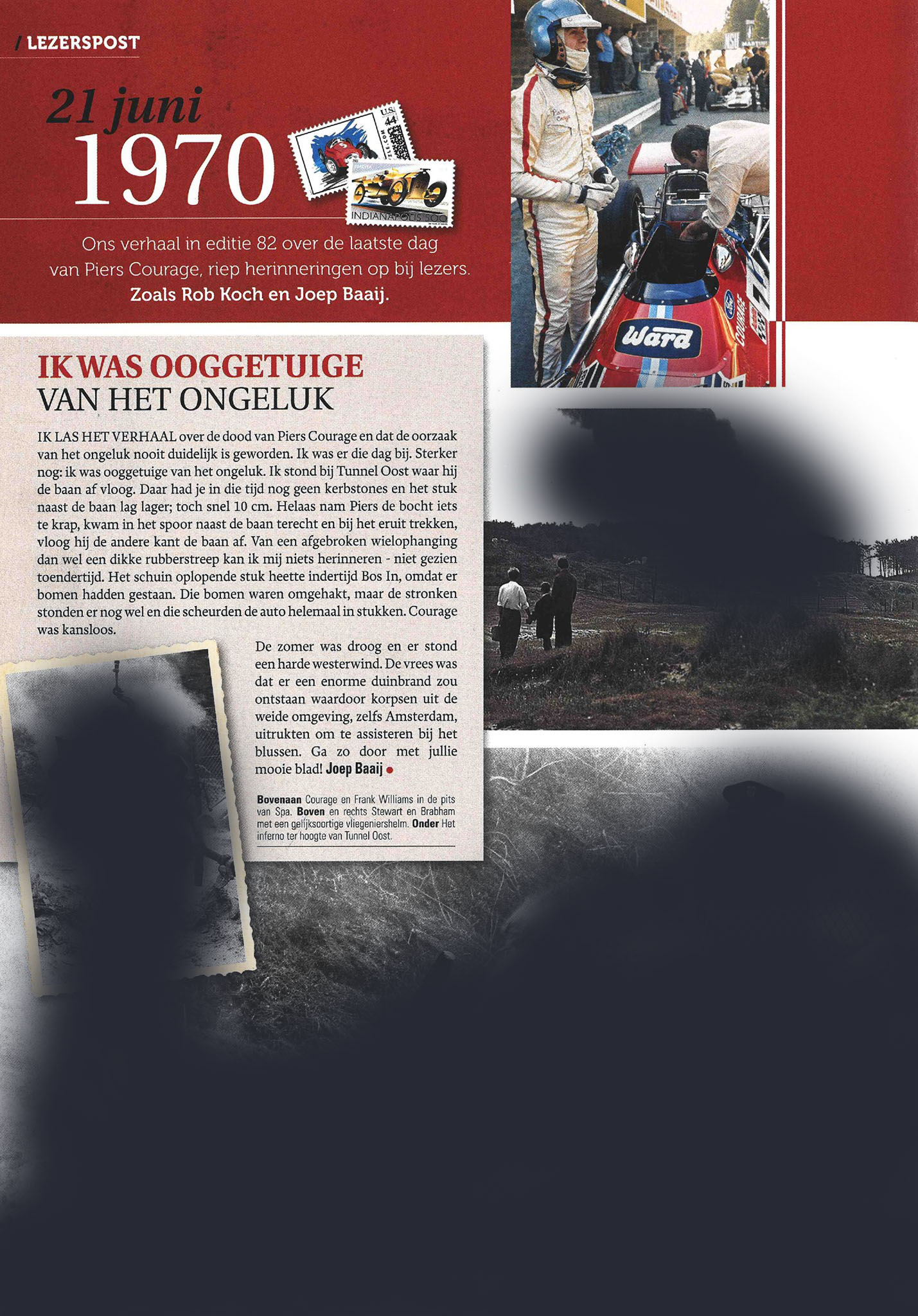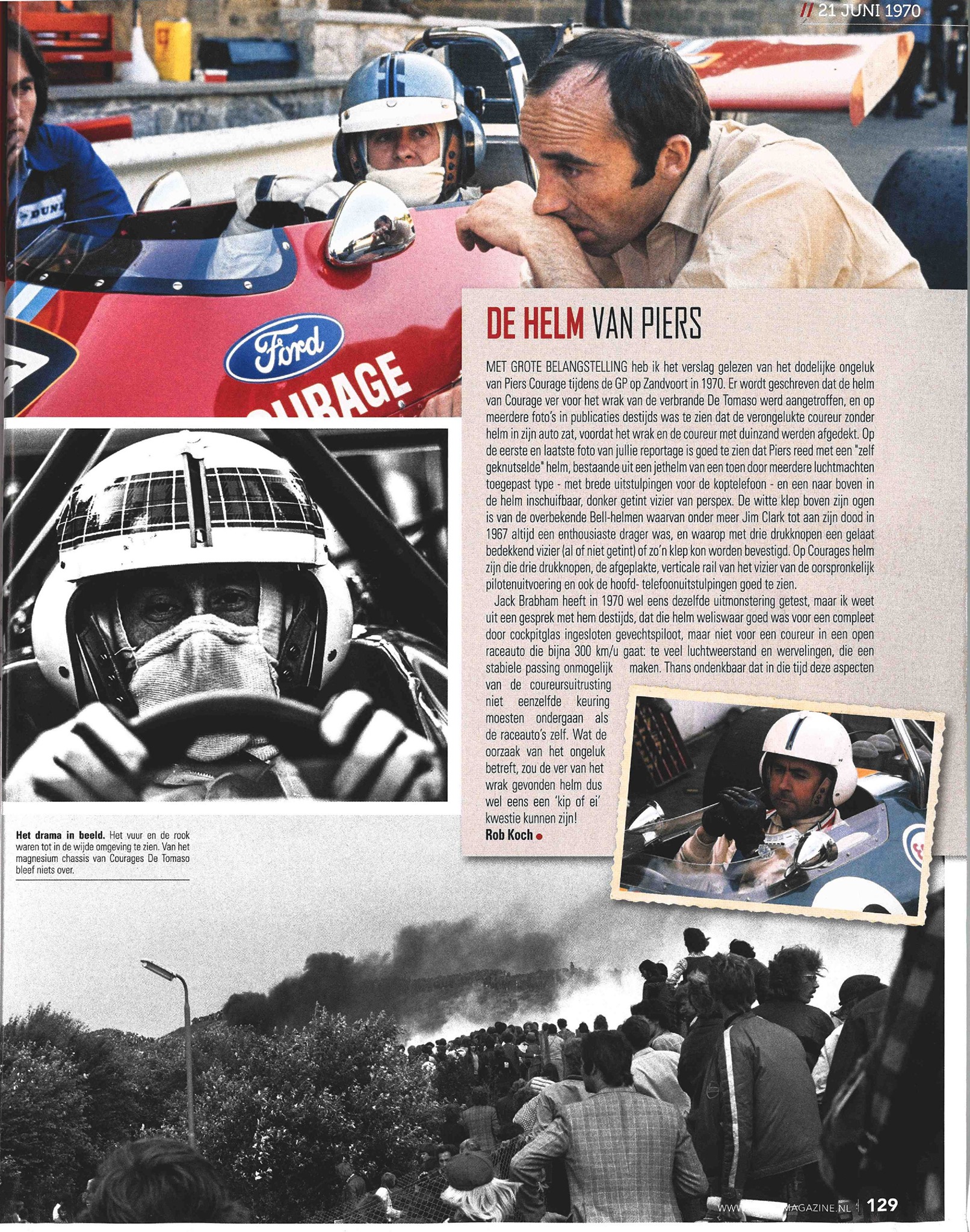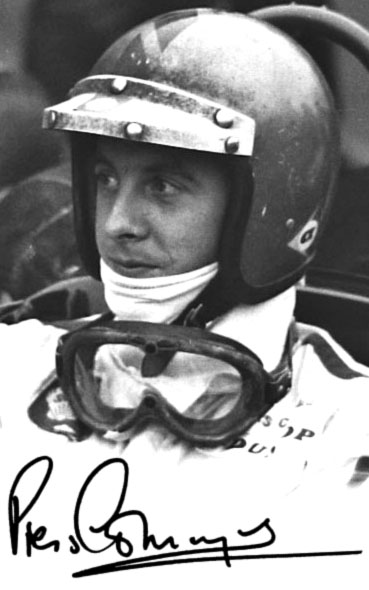Piers Raymond Courage (27 May 1942 – 21 June 1970) was a British racing driver.
He participated in 29 World Championship Formula One Grands Prix, debuting on 2 January 1967. He achieved two podium finishes, and scored a total of twenty championship points. Info from Wiki
Bio by Stephen Latham
A member of the famous brewing dynasty, Piers Courage attended Eton and while there used to make unofficial visits to Silverstone with fellow pupil Charles Lucas. After leaving Eton he worked in an accountants but his heart lay in motor racing, and his father eventually purchased a Lotus Seven in kit form for him. Once Piers and his friends finished assembling it he had his first race in it at Brands Hatch and there followed several club events, unfortunately without success and there is a story that he spun almost 30 times at one particular race meeting! Apart from his father purchasing the Lotus, there was no further financial assistance from the family and Piers funded his own way in racing.
After racing the Lotus Seven, and apparently gaining experience by regularly spinning it, he teamed up with Jonathan Williams in 1964. They raced as the Anglo-Swiss Racing Team and the cars were towed around Europe behind an old Ford Zephyr. After a number of accidents, the only way they could straighten out Piers’s chassis was to lean it against the pit wall and drive the Zephyr slowly into it! A team member recalled how one time he was following Piers in his Zephyr, who was driving with one foot on the dashboard and reading a book at the same time. However, he fell asleep at the wheel and the car gently began hitting the barrier, until he suddenly woke and took control.
After taking third place at Reims and second at Zandvoort during that season, it encouraged Piers to contest a full F3 season in 1965. Racing a Brabham for Lucas Racing (his friend Charles Lucas from their Eton days), he took four wins at Silverstone, Goodwood, Caserta and Reims and was the Premier Grovewood Award winner. These results encouraged Colin Chapman to offer a drive in a Lotus 41 for the 1966 F3 season. Early in the year he was hospitalised after crashing during practice at Buenos Aires though he fortunately recovered in time for the start of the European season. There were wins at Brands Hatch, Albi, Pau and Rouen plus many major placings in the top three and during the year he also had a drive in Ron Harris’ works F2 Lotus at the German GP. He also shared a Ferrari 275GTB with Roy Pike at Le Mans, finishing eight, plus took third place in a GT race at Crystal Palace in a Lotus Elan.
For 1967 he partnered Chris Irwin at Reg Parnell Racing (run by Tim Parnell) but it was to prove a frustrating time and he left the team after the Monaco GP. Moving into F2 in John Coombs’ McLaren M4A, there were some excellent drives, including fifth place at the Nurburgring, third at Hockenheim and a second at Zandvoort but there were also accidents at Pau, Enna and Brands Hatch. Returning to Le Mans that year, he shared a Maranello Concessionaires Ferrari 275GTB with R.Attwood, though retired from the race.
For 1968 he bought J.Coombs’s McLaren and during the winter contested the Tasman series, racing against drivers such as J.Clark, G.Hill, B.McLaren and C.Amon. At Longford, the final race of the seven race series, Piers outdrove everybody in the pouring rain to take a memorable victory and finished the series in third place. Rejoining the Parnell Racing team, there were retirements at the first four races, but his best results were sixth in France and a fourth place at the Italian GP. Alongside this he also drove in F2 for Frank Williams, taking third at Hockenheim and second at Pergusa and contesting the Temporada F2 Series there was a win at Buenos Aires.
When Frank Williams Racing decided to move up to Fl in 1969, Piers went with them but his year began with a return to the Tasman series, with victories at Longford and Invercargill. When the F1 season started, he drove superbly in the Brabham BT26, his best results being second at Monaco and Watkins Glen plus fifth at Silverstone. However, his finest drive came at Monza where he stuck with the leading pack for most of the race, trading places with Jackie Stewart’s Matra, Jochen Rindt’s Lotus and Bruce McLaren’s McLaren, until a fuel-feed problem slowed him towards the end and he finally finished fifth. Racing in F2, there was a victory at Enna plus he raced a Matra at Le Mans and finished fourth with JP.Beltoise.
For 1970 Williams replaced the Brabham with a de Tomaso-Ford and there were third place finishes in both heats of the Daily Express Silverstone International Trophy race, on each occasion following home the March 701s of Chris Amon and J.Stewart. Piers also competed in a number of endurance events with Alfa Romeo, taking a win with Andrea de Adamich at the Buenos Aires 200. In F1, despite several retirements, progress seemed to have been made with the de Tomaso by the time of the Dutch GP and they qualified ninth. Sadly, tragedy struck during the race when his car ran up an embankment, rolled and burst into flames, and Piers stood no chance.
As with many drivers, their sad deaths affect many people and Piers’s friends recalled with tremendous pleasure a good-natured man, who was always cheerful, happy and optimistic. Messages of condolence came from the Queen, Enzo Ferrari, Bruce McLaren’s parents in New Zealand and from all over the world of motor racing.
His friend Charlie Crichton-Stuart paid tribute to him, saying ”He was the sort of guy who would have been good for motor racing. He was interested in a lot of things outside the sport and he was a gentleman. A gentleman with a professional approach to his racing.” Charles Lucas stated “What more can you say other than that he was the dearest friend you ever had and you miss him every day,” and Sir Frank Williams declared ”He was the greatest fun, utterly charming. They don’t make them like that any more.”
In 2013, created on the initiative of TV commentator Allard Kalff, with support from Sir Frank Williams, a double memorial was unveiled at Zandvoort to commemorate Piers and Roger Williamson.
Piers Courage – Heir to an empire, cash-strapped natural – from ![]()
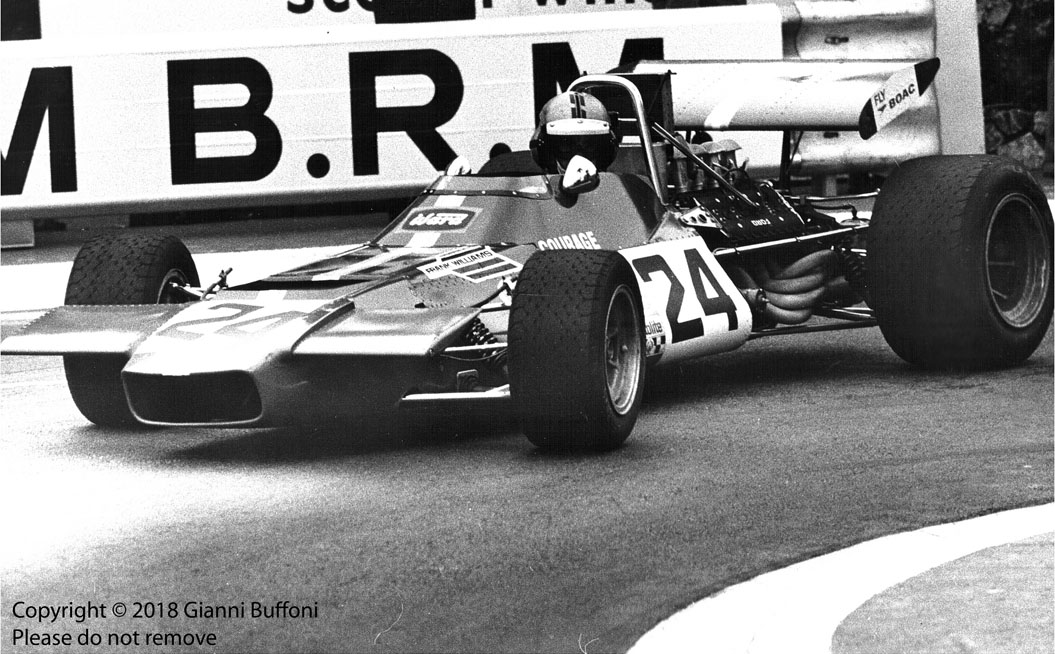
Motorsportfriends Kalender MK XVI
Calendar size is 14.8 x 14.8 cm (5.8″ x 5.8″), intended for tabletop use.
Printed on 170 g/m2 paper, wire bound with black cardboard cover. Finest
quality materials and printing… Edition size is 700 copies
20 Euro / CHF 25.00
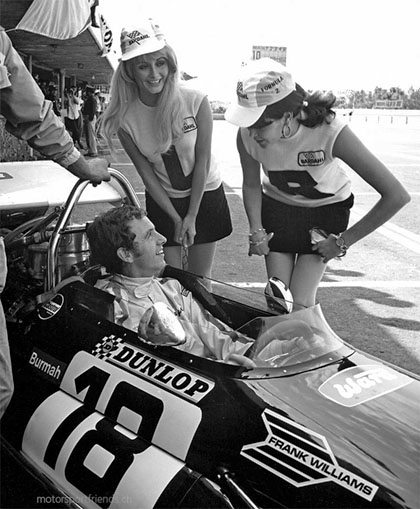
www.motorsportfriends.ch / thomas@mythenfilm.ch
THE PIERS HELMET
WITH GREAT INTEREST I read the report of the fatal accident of Piers Courage during the GP at Zandvoort in 1970. It is written that Courage’s helmet was found far in front of the wreckage of the burned De Tomaso, and on several photos in publications at the time showed that the crashed driver was without a helmet in his car, before the wreckage and the driver were covered with dune sand. In the first and last photo of your report you can clearly see that Piers was riding with a “self-made” helmet, consisting of a jet helmet of a type used by several air forces – with wide protrusions for the headphones – and one upwards in the helmet retractable, dark tinted perspex visor. The white peak above his eyes is from the well-known Bell helmets of which Jim Clark, among others, was always an enthusiastic wearer until his death in 1967, and on which a face-covering visor (tinted or not) or such a visor with three press studs could be confirmed. On Courage’s helmet, those three press studs, the taped, vertical rail of the visor of the original pilot’s version and also the headphone protrusions are clearly visible. Jack Brabham tested the same outfit in 1970, but I know from a conversation with him at the time that that helmet was good for a completely enclosed fighter pilot, but not for a driver in an open race car at almost 300 km / h goes: too much air resistance and eddies, which one make stable fit impossible. It is now inconceivable that at that time these aspects of the driver’s equipment did not have to undergo the same inspection as the racing cars themselves.
Rob Kochs
I WAS EYEWITNESS FROM THE ACCIDENT
I READ THE STORY about the death of Piers Courage and that the cause of the accident never became clear. I was there that day. In fact, I was an eyewitness to the accident. I was at Tunnel East where he flew off the track. At that time there were no curbstones there and the part next to the track was lower; about 10 cm. Unfortunately, Piers took the corner a bit too tight, ended up in the grass part next to the track and when pulling out, he flew the other way off the track. I cannot remember anything about a broken suspension or a thick rubber stripe – not seen at the time. The fast right corner section was called Bos in at the time, because there had been trees. Those trees had been cut down, but the stumps were still there and they ripped the car to pieces. Courage had no chance.The summer was dry and there was a strong westerly wind. The fear was that a huge dune fire would start, causing fire forces from the area, even Amsterdam, to come out to assist in extinguishing the fire.
Joep Baaij
The source
